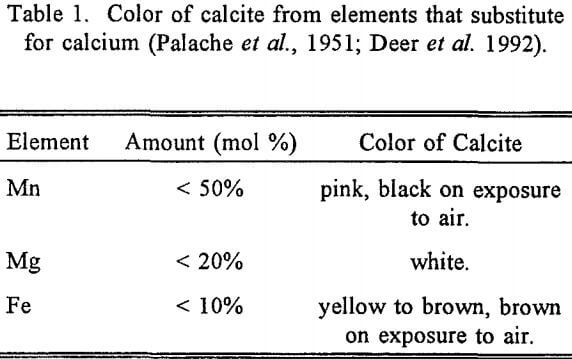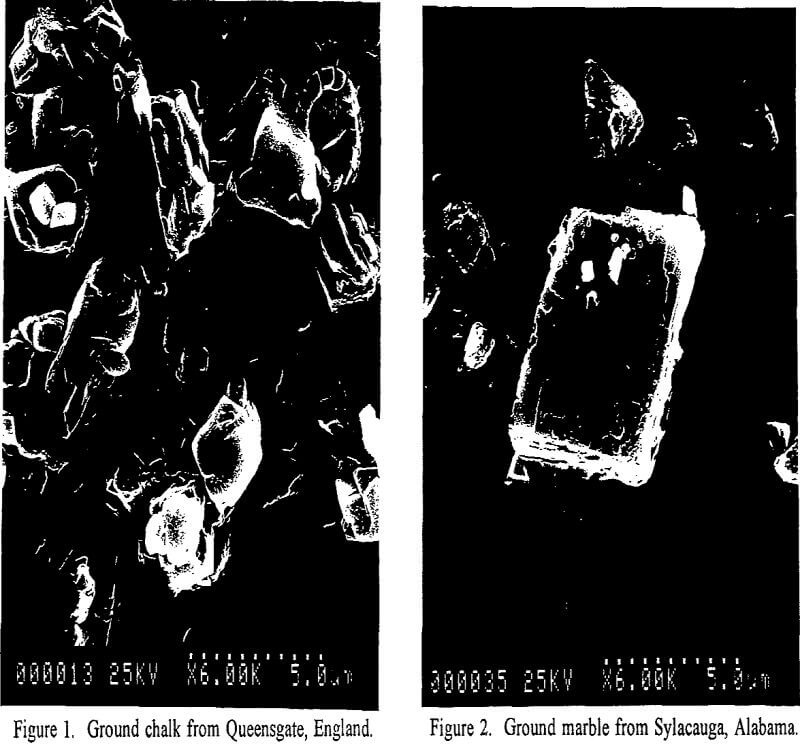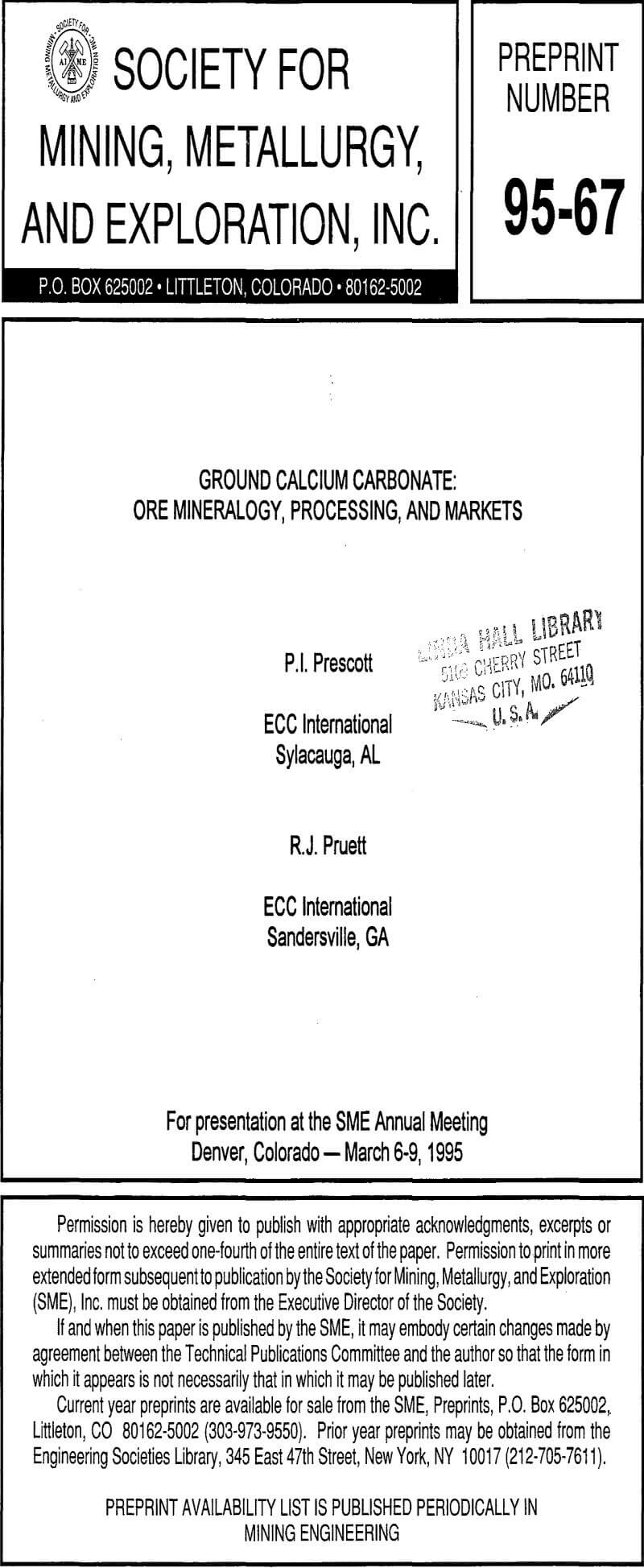Table of Contents
Ground calcium carbonate (GCC) is used in the paper, plastics, paint, rubber, caulks, and sealants industries. The favorable properties of GCC include high whiteness and brightness, low hardness, and outstanding rheology in water systems. The quality of calcitic GCC ores, which include chalk, limestone, and marble, is dependent on calcite purity and the nature and quantity of ancillary minerals. Wet and dry grinding are used in the manufacture of GCC.
Mineralogy
Calcite, CaCO3, is the principal mineral in GCC. Pure calcite is soft (3 on mohs scale), is white, has a specific gravity of 2.71, and has a refractive index from 1.486 to 1.658. Several elements can substitute for calcium and change its hardness, specific gravity, and optical properties. Prominent among these are Mg, Fe and Mn.

GCC ore used for high brightness and whiteness products must contain nearly pure calcite or aragonite. Some chromophore elements, as manganese, require only tens of ppm substitution to impart color. A carbonate deposit containing tinted calcite is unsuitable for high brightness GCC applications because there is no process that will economically whiten calcite.
Mineral impurities affect brightness, whiteness, and abrasion. The type of impurity associated with a GCC ore depends on deposit genesis. GCC is most commonly produced from chalks, limestones, and marbles. The amount and type of impurity is controlled by how and where these carbonate rocks are deposited, and what mineral reactions occur after deposition. One uncommon GCC ore is carbonatite, a calcite-bearing igneous rock. It has a distinctive set of accessory minerals affecting its properties.
Higher pressures and temperatures associated with deep burial metamorphose chalks and limestones into marble and form a new assemblage of ancillary minerals. These minerals can include wollastonite, tremolite, muscovite, chlorite, albite, and quartz. Many authigenic minerals, including chlorite and pyrite, are deleterious to brightness and whiteness. Other authigenic ancillaries, including wollastonite, tremolite, albite and quartz, raise abrasion.

Processing
The processing of carbonate ore is simply one of size reduction coupled with innovations to improve specific properties. Typically, an ore body, either underground or open pit, is drilled, blasted, and crushed. The crushed stone is washed and sized. The washing removes fines which contain a significant portion of the colored impurities.
Plant processing takes one of two routes: dry processing or wet processing. Dry processing will be discussed first, since it is often a precursor to wet processing. Dry grinding consists of a series of size reductions followed by classification. Classification can be accomplished by screening (coarse particle) or by air classifying (fine particles).
The stone is either crushed or pulverized to make feed for air-swept pendulum roller mills. However, the pulverized product can be alternately passed over a series of screens to make coarse “screened grade” products. The screened grade products are typically 6 to 40 mesh (3400 µm to 400 (µm) in mean particle size. The crushed or pulverized products, along with the screen rejects, can serve as feed to air-swept pendulum roller mills, or ball mills.
Wet processing, in general, produces finer particle size products and purer (whiter) products than dry processing. With dry processing, the entire stone, including the impurities, is ground into product. Wet processing, in contrast, offers the opportunity to improve the purity of the products by a reverse froth flotation process. The reverse flotation process removes the impurities, usually highly colored, from the carbonate ore as a froth. Another advantage of wet processing is that products in slurry form can be screened through 325 or 400 mesh screens to remove any coarse particles.
Markets
GCC is a very versatile mineral. GCC is available in a wide range of particle sizes. It has a high whiteness, especially when wet processed, a low abrasion, a low resin demand, and a high purity. Furthermore, GCC is relatively low cost.
The paper industry is a major consumer of mineral pigments. The projected 1994 consumption is expected to be almost 7 million tons with GCC at about 450,000 tons or 6.4%. Kaolin is the major mineral pigment with about 65% of the mineral consumption. The GCC grades used in paper are virtually 100% wet ground with particle sizes ranging from 0.5 µm to 3.5 µm.
GCC is used in plastics to reduce cost since plastics, on a pound-volume basis, are more expensive than the filler. GCC is also used because of its low resin demand, especially important in glass-reinforced thermoset polyesters. In select applications GCC is used because it has good whiteness, improves impact strength, aids in processing, and acts as a heat sink in exothermic curing systems.

